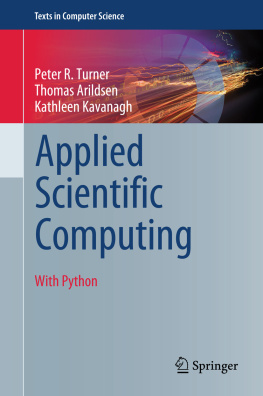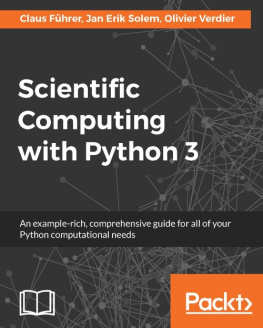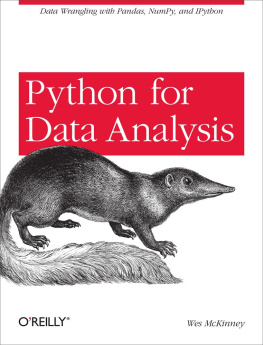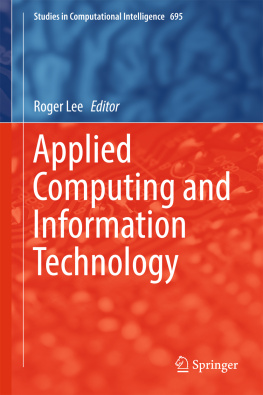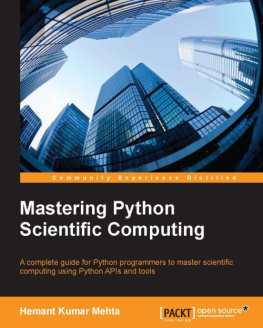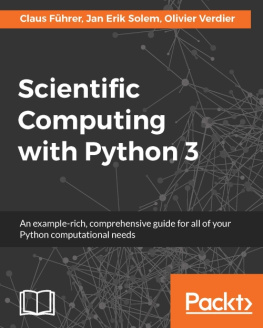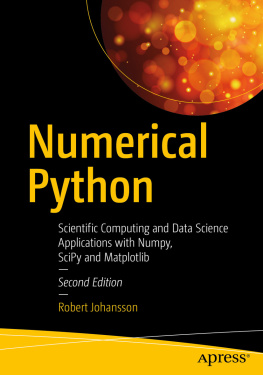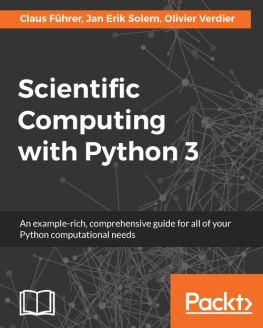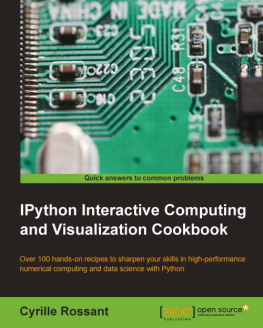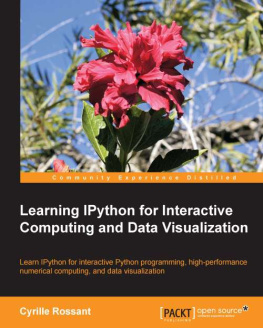Arildsen Thomas - Applied scientific computing with Python
Here you can read online Arildsen Thomas - Applied scientific computing with Python full text of the book (entire story) in english for free. Download pdf and epub, get meaning, cover and reviews about this ebook. City: Cham;Switzerland, year: 2018, publisher: Springer International Publishing, genre: Children. Description of the work, (preface) as well as reviews are available. Best literature library LitArk.com created for fans of good reading and offers a wide selection of genres:
Romance novel
Science fiction
Adventure
Detective
Science
History
Home and family
Prose
Art
Politics
Computer
Non-fiction
Religion
Business
Children
Humor
Choose a favorite category and find really read worthwhile books. Enjoy immersion in the world of imagination, feel the emotions of the characters or learn something new for yourself, make an fascinating discovery.
- Book:Applied scientific computing with Python
- Author:
- Publisher:Springer International Publishing
- Genre:
- Year:2018
- City:Cham;Switzerland
- Rating:3 / 5
- Favourites:Add to favourites
- Your mark:
- 60
- 1
- 2
- 3
- 4
- 5
Applied scientific computing with Python: summary, description and annotation
We offer to read an annotation, description, summary or preface (depends on what the author of the book "Applied scientific computing with Python" wrote himself). If you haven't found the necessary information about the book — write in the comments, we will try to find it.
Applied scientific computing with Python — read online for free the complete book (whole text) full work
Below is the text of the book, divided by pages. System saving the place of the last page read, allows you to conveniently read the book "Applied scientific computing with Python" online for free, without having to search again every time where you left off. Put a bookmark, and you can go to the page where you finished reading at any time.
Font size:
Interval:
Bookmark:
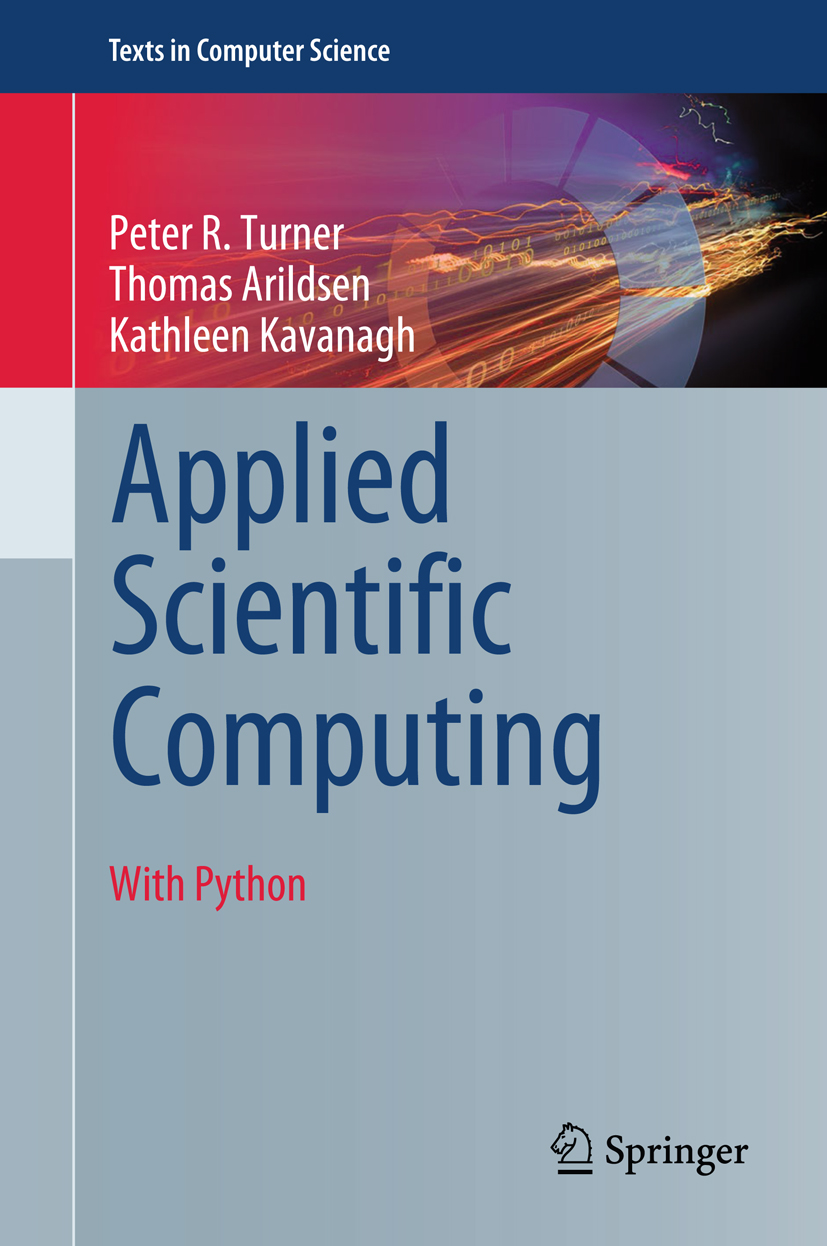
More information about this series at http://www.springer.com/series/3191

This Springer imprint is published by the registered company Springer International Publishing AG part of Springer Nature
The registered company address is: Gewerbestrasse 11, 6330 Cham, Switzerland
This book represents a modern approach to teaching numerical methodsor scientific computingto students with a broad range of primary interests. The underlying mathematical content is not new, of course, but the focus on applications and models (or modeling) is. Todays mathematics or computer science students have a strong desire to see the relevance of what they are studying in a practical way. This is even more true for students of other STEM disciplines in their mathematics and computing classes.
In an introductory text such as this, it is difficult to give complete detail on the application of the methods to real-world engineering, or economics, or physical science, or social science applications but it is important to connect those dots. Throughout the book, we emphasize applications and include opportunities for both problem- and project-based learning through examples, exercises, and projects drawn from practical applications. Thus, the book provides a self-contained answer to the common question why do I need to learn this?
That is a question which we believe any student has a right both to ask and to expect a reasonable and credible answer, hence our focus on Applied Scientific Computing. The intention is that this book is suitable for an introductory first course in scientific computing for students across a range of major fields of study. Therefore, we make no pretense at a fully rigorous development of all the state-of-the-art methods and their analyses. The intention is to give a basic understanding of the need for, and methods of, scientific computing for different types of problems. In all cases, there is sufficient mathematical justification and practical evidence to provide motivation for the reader.
Any text such as this needs to provide practical guidance on coding the methods, too. Coding a linear system solver, for example, certainly helps the students understanding of the practical issues, and limitations, of its use. Typically students find introductory numerical methods more difficult than their professors expect. Part of the reason is that students are expected to combine skills from different parts of their experiencedifferent branches of mathematics, programming and other computer science skills, and some insight in applications fields. Arguably, these are independent skill sets and so the probabilities of success multiply.
Our choice of Python for the computer language is based on the desire to minimize the overhead of learning a high-level language or of the intricacies (and cost) of a specific application package. The coding examples here are intended to be relatively easily readable; they are not intended to be professional-level software. The Python code is there to facilitate the learning and understanding of the basic material, rather than being an objective in itself.
Turning briefly to the content of the book, we gave considerable thought to the ordering of material and believe that the order we have is one good way to organize a course, though of course every instructor will have his/her own ideas on that. The chapters are largely independent and so using them in a different order will not be problematic.
We begin with a brief background chapter that simply introduces the main topics application and modeling, Python programming, sources of error. The latter is exemplified at this point with simple series expansions which should be familiar from calculus but need nothing more. These series expansions also demonstrate that the most obvious approach that a beginning student might adopt will not always be practical. As such it serves to motivate the need for more careful analysis of problems and their solutions. Chapter is still somewhat foundational with its focus on number representation and errors. The impact of how numbers are represented in a computer, and the effects of rounding and truncation errors recur in discussing almost any computational solution to any real-life problem.
From Chap. itself the focus is on numerical calculus. We put this before interpolation to reflect the students familiarity with the basic concepts and likely exposure to at least some simple approaches. These are treated without any explicit reference to finite difference schemes.
Chapters are devoted to linear and then nonlinear equations. Systems of linear equations are another topic with which students are somewhat familiar, at least in low dimension, and we build on that knowledge to develop more robust methods. The nonlinear equation chapter also builds on prior knowledge and is motivated by practical applications. It concludes with a brief treatment of the multivariable Newtons method.
The final two chapters are on interpolation and the numerical solution of differential equations. Polynomial interpolation is based mostly on a divided difference approach which then leads naturally to splines. Differential equations start from Eulers method, and then Runge Kutta, for initial value problems. Shooting methods for two-point boundary value problems are also covered, tying in many ideas from the previous chapters.
Font size:
Interval:
Bookmark:
Similar books «Applied scientific computing with Python»
Look at similar books to Applied scientific computing with Python. We have selected literature similar in name and meaning in the hope of providing readers with more options to find new, interesting, not yet read works.
Discussion, reviews of the book Applied scientific computing with Python and just readers' own opinions. Leave your comments, write what you think about the work, its meaning or the main characters. Specify what exactly you liked and what you didn't like, and why you think so.

